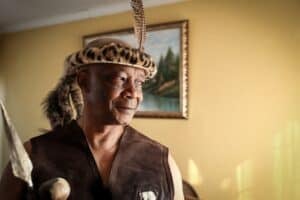The gunning down of 566 school children on this day, 47 years ago, is something South Africans must never forget.

The iconic image of 12-year-old Hector Pieterson’s final moments after being shot by police is a stark reminder of our past and the deeply entrenched systemic degradation of South Africa’s black citizens and pupils.
Pieterson was born in 1963 and on this day 46 years ago, a preteen boy woke up and began dressing for school. Except it wouldn’t be an ordinary day of instruction.
The then government under State President: Nico Diederichs and Prime Minister: John Vorster, unilaterally imposed Afrikaans as the medium of instruction in all schools, regardless of the language pupils spoke and understood.
A move no doubt, aimed at further breaking the spirits of the black population who were already segregated from upmarket South Africa, excluded from the formal economy, and only allowed Bantu education.
Under Bantu education, generations of black people would only be taught skills for menial, low-paying jobs, while more advanced subjects were only available to white pupils.
Today that term, Bantu education, carries the hallmarks of state-sanctioned discrimination and degradation of a particular group of people.
On this fateful morning 47 years ago, Pieterson joined other school children in protest of being forced to take instruction in Afrikaans.
Newspaper journalist Sam Nzima, who was on the scene, recalled it being a peaceful protest before heavily armed police descended on the children, ordering them to disperse.
The children began to recite a poem, Nkosi Sikelele iAfrica, which would go on to become South Africa’s national anthem.
But apartheid police saw the children’s reciting of that poem as an egregious act of rebellion against the state and retaliated by committing the most, shameful, despicable and unconscionable acts in our sordid history.
Also Read: Capturing the Soweto Uprising: SA’s most iconic photograph lives on
Police fired live rounds at unarmed children, mostly minors, killing 566 them.
Peterson became the face of the 1976 Soweto uprising when a fellow pupil, Mbuyisa Makhubu, carried the pre-teen boy who had been wounded by police gunfire and ran for their lives.
The terror etched on their faces was captured in a single image by Nzima, and published for the world to bear witness to our national shame, in one of the most brutal police attacks on its minor citizens.
“I saw a child fall down. Under a shower of bullets, I rushed forward and went for the picture. It had been a peaceful march, the children were told to disperse, and they started singing Nkosi Sikelele. The police were ordered to shoot.”
-Sam Nzima.
A post-mortem revealed that Pieterson was killed by a shot fired directly at him and not by a bullet ‘ricocheting off the ground’ as police claimed.
Another student, Hastings Ndlovu, is believed to have been the first to be shot by police on that fateful day.
June 16 has since been observed as a public holiday in South Africa called ‘Youth Day’ since 1994.
In the 1990s, a memorial dedicated to Pieterson was erected in Orlando, Soweto, two blocks from where he was shot and fell.
Later, in 2002, the Hector Pieterson Museum opened behind the memorial site.
NOW READ: ‘Social grants aren’t helping our youth’, leader of 1976 Soweto uprising tells government






